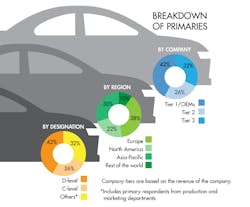Acumen Research and Consulting concludes that the global automotive power electronics market will grow at a 19.0% CAGR between 2018 and 2026, and the market is expected to reach a valuation of US$23.350 billion by the end of 2026.
Power electronics is a broad term given to a collection of solid-state devices such as diodes, silicon-controlled rectifiers (SCRs), thyristors, gate turn-off thyristors, power MOSFETs, and many others used for control and conversion of electric power. They play a major role in controlling automotive electronics. Automotive electronics is an advanced term derived from power electronic devices and its uses in modern electric power steering, braking systems, seat control, HEV main inverters, central body control, and so on.
Growing adoption of electric vehicles along with the rising trend of lightweight vehicles has been the major factor driving the market escalation. In addition, continuously increasing automotive sales also play a significant role in the market, and thus help drive the adoption of power electronics in automotive manufacturing. For instance, global automobile sales increased to 96.8 million in 2017, leading to a growth rate of 3.2%. Moreover, the rising trend of electric vehicles in developing countries and government regulations for lightweight vehicles are expected to create tremendous opportunities for the market.
The global automotive power electronics market is bifurcated based on application, vehicle type, electric vehicle, component, and geography. In terms of application, the market is bifurcated into body electronics, infotainment and telematics, safety and security, chassis and powertrain, and others.
Depending on the vehicle type, the market has been further segmented into passenger vehicles and commercial vehicles. Moreover, the market is classified based on electric-vehicle type, which includes plug-in hybrid electric vehicles, battery electric vehicles, and hybrid electric vehicles. And in terms of components, the market splits into MCUs, sensors, and power ICs.
When it comes to region, the automotive power electronics market segments into North America, Europe, Asia-Pacific, Latin America, and Middle-East and Africa (MEA). The North America region is expected to hold the largest market share followed by Europe, due to a well-established automotive industry and the rising adoption of electric vehicles. The market in the Asia-Pacific region is projected to witness the highest growth in coming years, owing to a rapid increase in electric-vehicle adoption in countries such as China and Japan.
Continental AG, Mitsubishi Electric Corp., Texas Instruments Inc., Robert Bosch GmbH, Toshiba Corp (Japan), ON Semiconductor Corp., Infineon Technologies AG, Maxim Products Inc., NXP Semiconductors N.V., Qualcomm Inc., Robert Bosch GmbH, Renesas Electronics Corp., and Vishay Intertechnology Inc. are the key players in the automotive power electronics market. These companies have been adopting several strategies, such as expansion in developing regions, in order to tap the underlying opportunities in these markets.
Joydeep Roy is a Senior Research Analyst at Acumen Research and Consulting.


